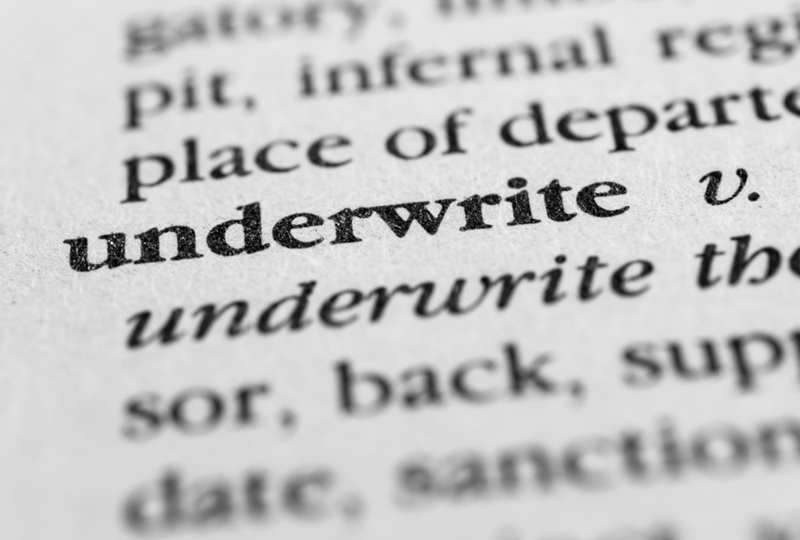
Are you ready to buy a home, but not sure what to make of all the mortgage jargon? For example… what is underwriting, anyway?
Edina Realty Mortgage has deep insights into the lingo you’ll need to know as you apply for a mortgage and go through the underwriting process.
What does underwriting mean?
Within the mortgage industry, underwriting is when a lender evaluates the risk of approving a mortgage loan for a homebuyer. The underwriting process aims to predict the borrower’s ability to repay the mortgage loan for the duration of the loan term.
At the end of the underwriting process, the borrower’s loan application is:
- Approved: The loan proceeds to closing.
- Approved with conditions: The underwriter has tentatively approved, and the borrower will need to agree to certain conditions, or provide specific documents, in order for the loan to proceed to closing.
- Suspended: A question about the borrower's file makes the lender unable to proceed in their evaluation; once the file is complete, it can be reviewed again.
- Declined: The loan does not meet the approval criteria and will not be approved.
Underwriting 101: What do underwriters look at and look for?
When determining if the loan will be approved, underwriters evaluate the borrower’s creditworthiness by looking at the three Cs:
- Credit
- Capacity
- Collateral
Credit, of course, examines your full credit history. At this stage in the underwriting process, the underwriter will review:
- Your past payment history — if you pay your bills in full and on time
- The number of companies that have extended loans to you in the past
- The length of your credit history (the longer the better)
- Any delinquent accounts, bankruptcies or other “dings” in your past
Capacity refers to the ability of the borrower to pay back the home mortgage loan over the long-term; in this step, the underwriter will assess your employment history and the debt you’ve incurred so far.
To get a better understanding of your ability to make monthly payments on your home mortgage, you can calculate your debt-to-income ratio.
Collateral is generally measured by the value of the house as well as the borrower’s down payment. If the borrower fails to make monthly mortgage payments, the lender can take possession of the property.
Lenders minimize their risk by ensuring:
- The loan amount does not exceed the property’s value.
- The buyer has “skin in the game” and will be incentivized to make their monthly mortgage payments.
In short, the home acts as collateral to ensure the buyer continues to repay the home mortgage for the length of the loan’s term.
My loan was approved with conditions. Is that a bad thing?
Many loans are approved with conditions and it’s not uncommon for the stated conditions to be outside the control of the buyer at the time of the loan application. So, don’t worry if you’re being approved with conditions — just be sure to take the conditions seriously and fulfill the underwriter’s request as soon as possible.
Common loan conditions are:
- Incomplete or unclear paperwork, including pay stubs, proof of employment or tax records
- Must-complete steps for buyers, including title verification, a home value appraisal, a final inspection and the purchase of homeowner’s insurance.
Why would a loan application be suspended?
The most common reason for a loan to be suspended is that the underwriter needs more information in order to make a final decision on the loan. For example, the borrower may not have submitted proof of income or they may be missing documents that verify their total assets.
When a loan is in suspension, it is basically in limbo. The potential borrower can work to clear up the discrepancy, then request that the loan file be reassessed to see if it now meet the lender’s standards for loan approval.
When is a loan application declined?
The most common reason for a loan to be declined is that the underwriter has found a larger discrepancy related to the “three Cs” — credit, capacity or collateral. While hundreds of variables could lead to a loan being declined, common reasons include:
- The borrower doesn’t earn as much as they had claimed in their loan application.
- The borrower’s debt-to-income ratio is higher than the maximum allowed.
- The borrower’s down payment is lower than they expected.
- The property’s appraisal is lower than expected.
If a borrower’s loan application is declined by the underwriter, the file for the loan application is closed. The borrower is encouraged to improve their credit and savings, and to reapply once they are in a better financial position.
Key points and next steps
While you’re moving forward with the purchase of your new home, keep in mind that underwriting is just one step in the homebuying process — and it’s not the first one!
To get started on the homebuying journey, consider getting home loan pre-approval, which will help you set a responsible budget as you house hunt.
If you’re ready to continue your home buying journey, or want to learn more about what pre-approval and underwriting mean, reach out to an Edina Realty mortgage loan officer today.
Additional resources to consider:
How to prepare your finances to buy a house
Getting approved for a mortgage with a low credit score
Five steps in the mortgage underwriting process
What is real estate underwriting?








